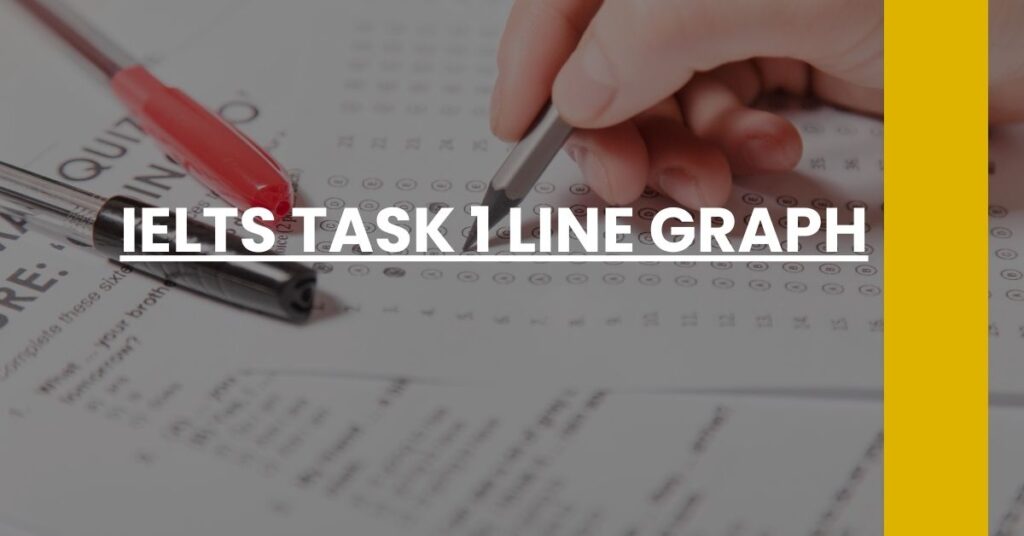Master the IELTS Task 1 line graph analysis with precision and confidence.
- Key Features of the IELTS Task 1 Line Graph: Learn to identify and describe the main components crucial for a high-scoring response.
- Descriptive Vocabulary for Line Graphs: Enhance your descriptive language tailored specifically for line graph presentations in IELTS Task 1.
- Interpreting Data Over Time: Gain proficiency in articulating changes and trends presented in various line graphs.
Refine your skills in the IELTS Task 1 line graph section with smart strategies.
- Understanding IELTS Writing Task 1: Line Graph Essentials
- Analyzing the Line Graph: Step-by-Step Approach
- Structure and Organization Strategies for Your Response
- Developing a Strong Introduction and Overview
- Describing Trends and Changes over Time
- Vocabulary to Describe Data and Trends
- Grammar Focus for Accurate Data Representation
- Crafting an Impactful Conclusion
- Common Pitfalls in Line Graph Analysis and How to Avoid Them
- Practicing with Real IELTS Line Graph Examples
- Conclusion and Next Steps for Aspirants
Understanding IELTS Writing Task 1: Line Graph Essentials
When you’re gearing up to tackle the IELTS Writing Task 1, it’s crucial to get acquainted with line graphs, as they’re a common feature of the exam. A line graph presents data changes over time and is your opportunity to demonstrate an ability to interpret and describe these changes in written form.
To set yourself up for success, remember the line graph will typically measure a particular variable over time intervals, such as years, quarters, or months. You’re not just recounting the data; you’re enabling a reader to visualize the trends without seeing the graph.
What Exactly is a Line Graph in IELTS Task 1?
A line graph in the IELTS context will often display comparative data between different elements across various time frames. Your job is to pinpoint and articulate the critical trends and fluctuations, all within a structured and coherent write-up.
Analyzing the Line Graph: Step-by-Step Approach
When you first encounter an IELTS Task 1 line graph, it’s essential to adopt a methodical approach to understand and describe the information displayed.
Step 1: Initial Observation
- Study the Title: Start by observing the title of the line graph to grasp the overall context.
- Look at the Axes: Check the units and time frames referenced on both the X (horizontal) and Y (vertical) axes.
Step 2: Identify Key Points
- Notable Changes: Seek out significant changes such as peaks, troughs, or intersections.
- Trend Lines: Consider overall trends across the entire time period.
Step 3: Making Comparisons
- Differential Analysis: Compare different elements in the graph, such as multiple lines representing varied categories or demographics.
Structure and Organization Strategies for Your Response
Being structured in your response ensures that your description of the IELTS Task 1 line graph is clear and easy for the examiner to follow.
Introduction and Overview
Begin with a succinct introduction where you paraphrase the title and overview of the graph. Directly after, you provide a summary of the main trends without digging into details.
Main Body
This is where you’ll spend the bulk of your time, describing in detail each trend or change over time, organizing it either by time periods or categories of data, whichever creates a clearer descriptive flow.
Developing a Strong Introduction and Overview
In the line graph task, nailing the introduction sets the tone for the rest of your writing.
Crafting Your Introduction
- Paraphrase: Start by paraphrasing the line graph’s title.
- Introduction Example: If the title is “Internet Usage Over Time,” you might say, “The graph outlines how internet usage has fluctuated over several years.”
Creating a Compelling Overview
In your overview, you aim to summarize the most noticeable trends without attaching any data points yet.
- Highlight Extremes: Mention the highest and lowest points or any other striking feature to give a snapshot of the graph’s range.
Describing Trends and Changes over Time
Describing trends and changes requires you to move beyond simply stating figures; you should interpret what they mean in real-world terms.
Describing Upward Trends
- Steady Rise: Use phrases like “a gradual increase” to describe a steady upward trend.
- Sharp Increase: For a more dramatic rise, “a sharp spike” conveys urgency and speed.
Describing Downward Trends
- Continuous Decline: Talk about “a steady decrease” when the graph shows a persistent drop.
- Rapid Decline: Phrases like “a significant fall” capture quick and substantial reductions.
Describing Fluctuations
- Consistent Fluctuations: Use “a series of fluctuations” to indicate ongoing instability.
- Single Fluctuation: A “momentary dip” or “temporary peak” can describe a one-off variation.
Remember, when you’re preparing for your IELTS Task 1 line graph, clarity is king. Ensure each sentence stands on its own, supporting the cohesiveness of your analytical narrative. Use effective transitions like “In contrast,” or “Similarly,” to connect ideas smoothly. Keep your wording straightforward and choose simpler alternatives to complex words whenever possible. This approach not only makes your writing accessible but also showcases your ability to communicate complex information effortlessly.
Vocabulary to Describe Data and Trends
To excel in the IELTS task 1 line graph analysis, a rich vocabulary is your ally. By employing diverse expressions, you can depict the nuances of data with precision—and this is what scores high with examiners.
Essential Verbs to Capture Movement
Verbs are the engines of your sentences when describing movements in a line graph:
- Rose / Increased: These versatile verbs effectively describe any upward trend.
- Fell / Decreased: Perfect for those times when the data takes a downward turn.
- Leveled off: A go-to choice when the data evens out after a period of change.
- Peaked: Use this when the data reaches its highest value.
- Bottomed out: Applies when the data hits its lowest point.
Adjectives and Adverbs for Emphasizing Trends
Modify your verbs with adjectives and adverbs to provide intensity and depth to the trends:
- Gradual / Gradually: Indicates a smooth, steady change rather than an abrupt swing.
- Sudden / Suddenly: Suggests an immediate shift that stands out in the data.
- Marked / Remarkably: These words are invaluable when emphasizing significant trends.
Nouns to Reference Specifics
When it comes to nouns, context is king:
- Increase / Decrease: These nouns allow you to discuss the trend itself as a concept.
- Peak / Trough: Useful when you need to pinpoint specific features within the graph.
- Fluctuation: This term captures the instability in the data.
Grammar Focus for Accurate Data Representation
The foundation of an impactful IELTS Task 1 line graph description is a tight grammatical structure. This is where you channel your inner architect to construct sentences that stand the test of rigorous examination.
Perfecting Tenses for Time Frames
Time contexts dictate the tense you should use:
- Past Simple: If the data deals with past years, the past simple tense will likely be your mainstay.
- Present Perfect: Use this to connect past data with the present, especially when the latest data impact is still relevant.
- Will / Future Simple: Employ these when the graph makes projections about the future.
Prepositions for Precision
Prepositions often come in small packages but play a pivotal role in relating elements within your sentences:
- From…to / Between…and: These prepositions are perfect for discussing the span of time or range in data.
- By: When you need to quantify the change, “by” is your go-to preposition. For instance, “Sales increased by 10%.”
Crafting an Impactful Conclusion
An impactful conclusion echoes the main trends without introducing new information, serving as a coherent endpoint to your analysis. Think of it as your final note that resonates with clarity and conciseness.
Summing Up the Key Points
Here’s how you might craft this crucial part of the essay:
- Reiterate the most significant trends.
- Connect your conclusion back to the overview.
Common Pitfalls in Line Graph Analysis and How to Avoid Them
Even the most diligent students can stumble when analyzing IELTS task 1 line graph. Forewarned is forearmed—so let’s tackle these pitfalls head-on.
Overgeneralization
Avoid blanket statements that don’t reflect the data’s detail:
- Incorrect: “Sales were always increasing.”
- Correct: “Sales mostly increased, with some minor fluctuations.”
Overspecification
Conversely, minutiae can be as unhelpful as vagueness:
- Incorrect: “Sales increased by 0.1% in the first week, then by 0.15% in the second week…”
- Correct: “There was a gradual increase in sales over the first month.”
Lack of Varied Vocabulary
Repeating the same terms can tire the reader. Mix it up:
- Instead of “Increase”: Try “surge,” “climb,” or “grow.”
Practicing with Real IELTS Line Graph Examples
Practice is a non-negotiable part of preparing effectively for the IELTS task 1 line graph. Use authentic material for a training session as close to test conditions as possible.
Engage with Official IELTS Material
Get a feel of the real deal by engaging with practice material that mirrors the IELTS standard. Utilize the following for targeted practice:
- Official sample tasks: The official IELTS website contains sample tasks for Writing Task 1 line graphs.
- IELTS Liz: A treasure trove of lessons and tips, including practices for line graphs.
Evaluate with Exemplars and Model Answers
Analyzing model answers can provide insights into effective structuring and phrasing:
- High-scoring model answers: Use these to benchmark your practice efforts and envisage the level you aspire to reach.
Conclusion and Next Steps for Aspirants
Having equipped yourself with strategies for dealing with line graphs in IELTS Task 1, the next steps involve honing these skills. Regular practice, coupled with a critical evaluation of your work, is pivotal. Learn to leverage online resources that provide comprehensive input on every aspect of your learning journey. Stay committed, practice with intent, and let your preparation pave your way to IELTS success.
Master IELTS Task 1 line graph analysis with our expert tips, essential vocabulary, and structured approach for high scores.

